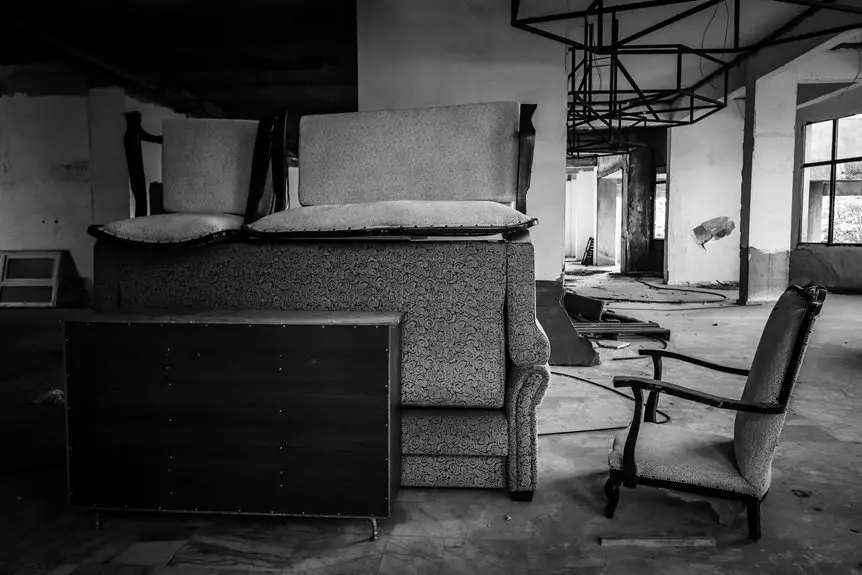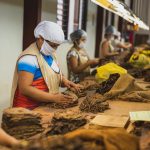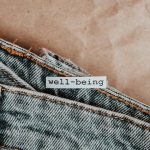You need SMS fabric because it combines three layers—spunbond, meltblown, and spunbond—to give you strength, filtration, and breathability all in one. The outer spunbond layers add durability, while the middle meltblown layer traps tiny particles, perfect for medical gear and hygiene products. It’s lightweight, cost-effective, and versatile across industries. Plus, you can discover its manufacturing process, unique advantages, and even environmental impacts as you explore further.
Table of Contents
Key Takeaways
- SMS fabric consists of three layers: spunbond outer layers for strength and a meltblown middle layer for fine particle filtration.
- Manufactured by extruding polymer filaments for spunbond layers and using high-velocity air to form ultra-fine meltblown fibers.
- It offers high tensile strength, excellent filtration, breathability, lightweight comfort, and liquid resistance at a cost-effective price.
- Commonly used in medical protective apparel, hygiene products, agriculture crop covers, and industrial disposable garments.
- Made from polypropylene, SMS fabric poses environmental challenges but some manufacturers focus on recycling and sustainable production practices.
Understanding the Composition of SMS Fabric
SMS fabric combines three layers—spunbond, meltblown, and spunbond—to create a material known for its strength and filtration.
When you look closer, the outer spunbond layers provide durability and resistance to tears, while the middle meltblown layer acts as a fine filter, capturing tiny particles.
This combination makes SMS fabric ideal for applications where both protection and breathability matter.
You’ll find it in medical gowns, masks, and other protective gear because it balances toughness with filtration efficiency.
By understanding these layers, you can appreciate why SMS fabric performs so well in demanding environments.
Understanding each layer reveals why SMS fabric excels under tough conditions.
Each layer complements the others, ensuring the fabric doesn’t just hold up physically but also filters effectively without sacrificing comfort.
The Manufacturing Process of SMS Material
You’ll start by creating the spunbond layer, where polymer fibers are extruded and stretched into a web.
Next, the meltblown layer forms through a process that uses high-velocity air to produce fine fibers.
Finally, these layers are laminated together to create the strong, breathable SMS fabric you rely on.
Spunbond Layer Production
Producing the spunbond layer starts with melting polymer pellets and extruding them through fine spinnerets to form continuous filaments.
You then cool and solidify these filaments using air quenching.
Next, the filaments are stretched to orient the molecules, which enhances strength and durability.
Finally, the filaments are laid down randomly on a moving belt to create a web and bonded thermally to form a cohesive nonwoven fabric.
Here’s the process simplified:
- Melt polymer pellets and extrude filaments through spinnerets.
- Cool filaments rapidly with air quenching.
- Stretch filaments to improve strength.
- Lay filaments randomly and bond thermally into a fabric.
This method guarantees the spunbond layer is strong, breathable, and uniform for SMS fabric.
Meltblown Layer Formation
The meltblown layer forms the critical middle layer in SMS fabric, providing fine filtration and barrier properties.
You start by melting polymer pellets, typically polypropylene, and extruding the molten polymer through tiny nozzles. As the polymer exits, high-velocity hot air attenuates the fibers, stretching them into ultra-fine filaments.
These fibers then rapidly cool and deposit onto a moving conveyor or spunbond layer below, creating a nonwoven web. This web is lightweight but dense, with microfibers that trap particles effectively.
You control fiber diameter, web thickness, and basis weight by adjusting temperature, air velocity, and extrusion speed.
Because of this precise process, the meltblown layer delivers essential filtration and liquid resistance, making SMS fabrics ideal for medical, hygiene, and protective applications.
Layer Lamination Techniques
Although each layer in SMS fabric serves a unique function, their effectiveness hinges on how well they’re bonded together.
Layer lamination techniques guarantee the spunbond and meltblown layers act as a unified material. You’ll find that manufacturers primarily use these methods:
- Thermal Bonding – Applying heat and pressure to fuse layers without adhesives.
- Ultrasonic Welding – Using high-frequency vibrations to bond layers instantly.
- Adhesive Lamination – Adding a thin adhesive layer between fabrics for strong bonding.
- Calendering – Passing layers through heated rollers to press and bond fabrics.
Each technique balances strength, flexibility, and breathability.
You’ll want to select lamination methods that preserve the SMS fabric’s filtration and durability properties while meeting your production needs.
Key Properties and Characteristics of SMS Fabric
When you handle SMS fabric, you’ll notice its unique combination of strength and breathability sets it apart from other materials. This fabric boasts durability thanks to its spunbond layers, while the meltblown layer provides excellent filtration and softness. Its lightweight nature guarantees comfort without sacrificing protection. Plus, SMS fabric resists liquids and particles, making it ideal for demanding environments.
| Property | Description |
|---|---|
| Strength | High tensile strength from spunbond layers |
| Filtration | Meltblown middle layer traps particles |
| Breathability | Allows air flow, reducing heat buildup |
Applications of SMS Fabric in the Medical Industry
You’ll find SMS fabric plays an essential role in the medical field, especially in protective apparel like gowns and masks.
It’s also used in various medical equipment components due to its durability and filtration properties.
Let’s explore how these applications benefit both healthcare workers and patients.
Protective Apparel Uses
SMS fabric plays an essential role in the medical industry by providing reliable protective apparel that keeps healthcare workers safe.
You rely on its barrier properties to guard against fluids, bacteria, and viruses, ensuring a safer work environment. When you wear SMS-based protective clothing, you benefit from its durability and breathability, which enhance comfort during long shifts.
Here are four key uses of SMS fabric in protective apparel:
- Surgical gowns that prevent contamination
- Isolation gowns protecting against infectious agents
- Face masks offering filtration and fluid resistance
- Caps and shoe covers minimizing cross-contamination
Medical Equipment Components
Although protective apparel often takes the spotlight, medical equipment also relies heavily on SMS fabric for its unique combination of strength, filtration, and breathability.
When you handle devices like surgical drapes, wound dressings, or sterilization wraps, you’re benefiting from SMS fabric’s ability to provide a sterile barrier while allowing airflow. This keeps infections at bay without compromising comfort or usability.
You’ll also find SMS fabric in components like face mask layers and surgical gowns, where its filtration efficiency filters out harmful particles effectively. Its durability guarantees medical tools remain protected during procedures.
Use of SMS Fabric in Hygiene and Personal Care Products
Hygiene and personal care products often rely on materials that combine comfort, durability, and breathability. SMS fabric fits this need perfectly, making it a popular choice for items you use daily.
Its layered structure offers excellent liquid resistance while maintaining softness against your skin.
You’ll find SMS fabric in products like:
- Diapers and training pants, keeping moisture away effectively.
- Sanitary napkins, providing a breathable barrier that prevents irritation.
- Wipes, ensuring durability and gentle cleansing.
- Adult incontinence products, offering reliable protection and comfort.
Agricultural and Industrial Uses of SMS Fabric
Beyond personal care, this fabric finds valuable applications in agriculture and industry, where durability and protection are key.
You can use SMS fabric as crop covers to shield plants from pests, frost, and harsh weather while allowing air and moisture to pass through. It’s lightweight and breathable, making it ideal for extending growing seasons without harming crops.
In industrial settings, you’ll find SMS fabric used for protective clothing, such as disposable coveralls and lab coats, guarding workers against dust, liquids, and contaminants.
It’s also employed in packaging materials to protect goods during transportation.
Advantages of SMS Fabric Over Other Nonwoven Materials
When you compare SMS fabric to other nonwoven materials, you’ll notice it offers a unique balance of strength, breathability, and cost-effectiveness. This combination makes it ideal for many applications where durability and comfort are essential.
You’ll find SMS fabric outperforms in areas where other materials might fall short.
Here are four key advantages of SMS fabric:
- Enhanced strength due to the spunbond layers, providing excellent tear resistance.
- Superior filtration from the meltblown layer, blocking fine particles effectively.
- Breathability that prevents moisture buildup, keeping you comfortable.
- Cost efficiency, as it offers high performance without a high price tag.
Choosing SMS fabric means you get a reliable, versatile material that meets diverse needs better than many alternatives.
Environmental Considerations and Sustainability of SMS Fabric
Although SMS fabric offers many benefits, you should also consider its environmental impact and sustainability. SMS is primarily made from polypropylene, a type of plastic derived from fossil fuels, which means its production contributes to carbon emissions and resource depletion.
However, you can find manufacturers focusing on recycling and using post-consumer materials to reduce waste. Additionally, SMS fabric is lightweight and durable, which can lower transportation emissions and extend product life.
When disposing of SMS products, keep in mind they aren’t biodegradable but can be recycled in some facilities. To minimize your ecological footprint, look for suppliers committed to sustainable practices, including energy-efficient production and responsible waste management.
Balancing performance with environmental responsibility guarantees you make smarter, greener choices with SMS fabric.
Frequently Asked Questions
How Does SMS Fabric Compare Cost-Wise to Traditional Textiles?
You’ll find SMS fabric usually costs more than traditional textiles because of its specialized layers and protective features. However, its durability and filtration benefits often justify the higher price in medical and industrial uses.
Can SMS Fabric Be Dyed or Printed On?
You can dye or print on SMS fabric, but it’s tricky since it’s synthetic and water-resistant. You’ll need special dyes or printing techniques designed for nonwoven materials to get vibrant, lasting colors without damaging the fabric.
What Are the Care Instructions for Garments Made From SMS Fabric?
You don’t want to baby your SMS garments, so just avoid high heat and harsh detergents. You can gently machine wash cold and air dry—they’re tough but don’t expect them to survive your usual rough treatment!
Is SMS Fabric Breathable Enough for Everyday Clothing?
You’ll find SMS fabric somewhat breathable, but it’s mainly designed for protection, not comfort. For everyday clothing, it might feel less airy and flexible than natural fabrics, so you might prefer materials made specifically for breathability.
Are There Any Known Allergies Related to SMS Fabric?
You’d think SMS fabric would cause a tidal wave of allergies, but luckily, it’s generally hypoallergenic! Still, if you’re sensitive to synthetic materials, you might experience mild irritation—always test before diving in fully.
- The Use of Nonwovens in Construction and Civil Engineering - July 11, 2025
- The Use of Nonwovens in Construction and Civil Engineering - July 11, 2025
- The Use of Nonwovens in Construction and Civil Engineering - July 11, 2025







